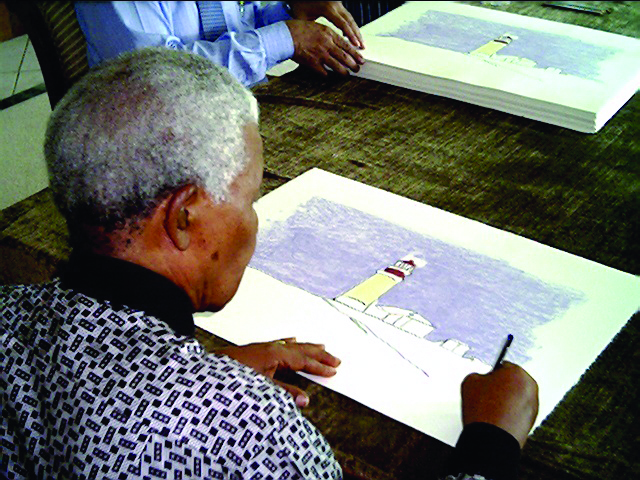Nelson Mandela, the artist, was born in 2003, with an introspective set of signed charcoal lithographs, 21 in all, completed under supervision. They harked back to Robben Island.

Pains were taken to ensure that the pieces weren’t forged. The paper he drew on was watermarked. The prints also carry an embossed stamp of two joined hands. Hours of footage were shot, showing him hard at work on the pieces, to prove that he did in fact create them.
In the South African art market, the pieces have done exceptionally well selling for around $13,300, 10 times their value on release. They are expected to appreciate over time, a rarity in African art. At a London auction, a handprint lithograph, with an authenticated signature, sold for almost $27,000.
It’s good business that has brought some problems. Almost all of this art is going to end up outside of Africa.
Loading...
“There is demand, mostly from foreign collectors. Most of our sales, around 80 percent, are to international buyers,” says Andre Blignaut from the Clock Tower Gallery in Cape Town, one of the two major dealers and authenticators of Mandela’s art.
Soon after Mandela’s hospitalization, forgeries of ‘no particular skill’ were said to litter the market. Fakes were selling at $4,500 apiece. However, significant proof, beyond the inspections of a small group of Mandela art experts, of whether the pieces were counterfeit has yet to surface.
“It’s the name behind the art, that’s why they are valuable. A lot of artists are trying to capitalize on Nelson Mandela but this doesn’t mean it’s good. Good art sells, there is a lot of poor art out there,” cautions Blignaut.
At the same time, public art is also hijacking Mandela’s legacy status. The recent unveiling of a tribute sculpture known as Perceiving Freedom on the Sea Point promenade in Cape Town is causing controversy. It is an enlarged metal and plastic model of a pair Ray-Ban sunglasses looking on to Robben Island. Critics decried the piece as ‘advertising masquerading as art’.

Rebecca Hodes, who wrote on the offending sculpture, warns: “In consenting to its installation, the City of Cape Town has made itself complicit in the corporate abuse of public land and in the hijacking of one of our greatest national icons for private gain.”
As South Africa remembers its national treasure, a year after his death, issues of how best to preserve his legacy must be understood and then resolved.
Loading...
